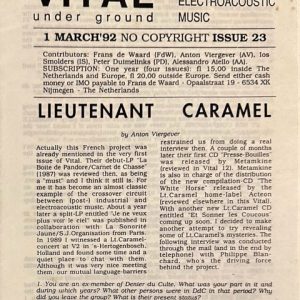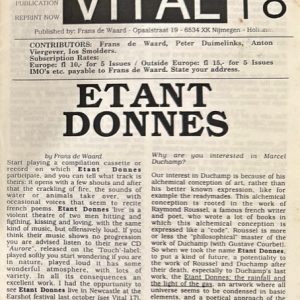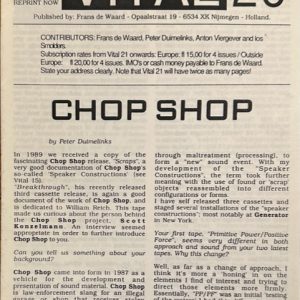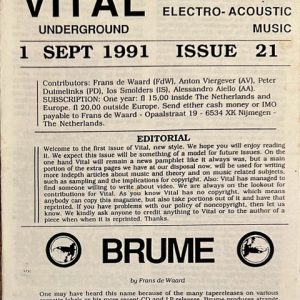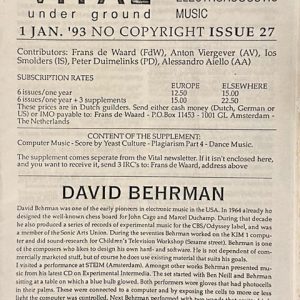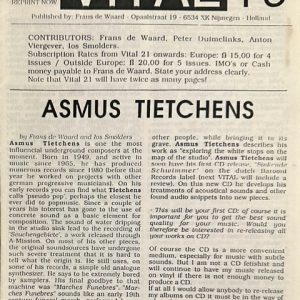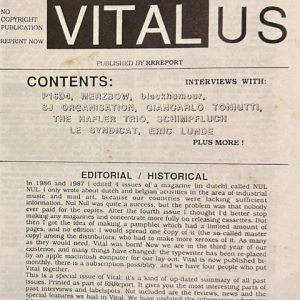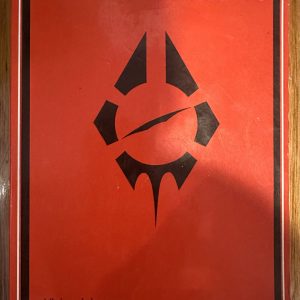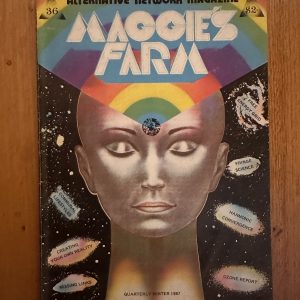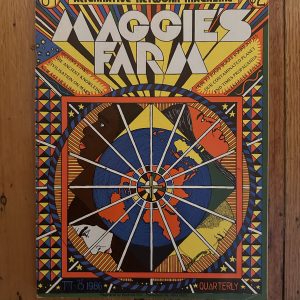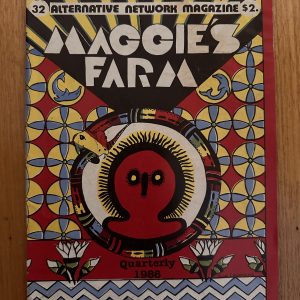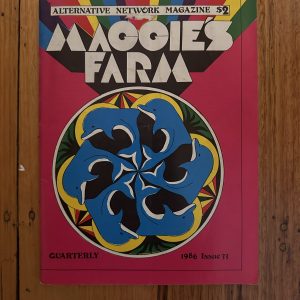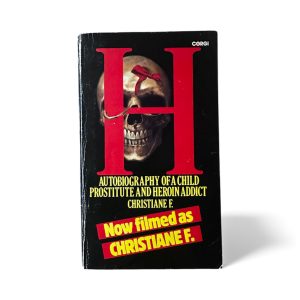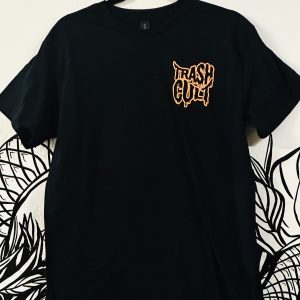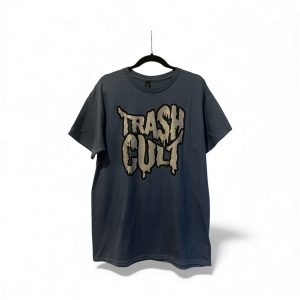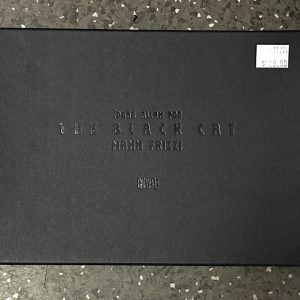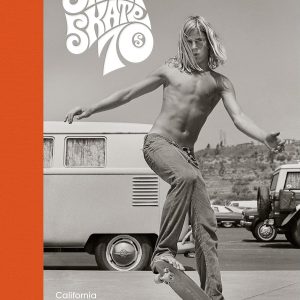VITAL Zine: Issue 23 – March 1992 (Contemporary Underground Magazine for Electronis and Electroacoustic Music) Frans de Waard – LUITENANT CARAMEL
$35.00Frans de Waard published Vital, a fanzine for electronic and electroacoustic music, from 1987 to 1995. It was a low-budget, Xeroxed publication, bearing the revolutionary instruction: ‘No Copyright Publication. Reprint Now!’ It featured interviews with Asmus Tietchens, O Yuki Conjugate, Merzbow, P16.D4, Pierre Henry, Jim O’Rourke, Brume, Döc Wor Mirran and many others, hosted discussions on copyright, plagiarism and plunderphonics, house music, ambient music, cassette culture and noise, and included contributions from musicians such as Leigh Landy, Godfried Willem Raes, John Duncan, and GX Jupitter-Larsen. Every issue included reviews of cassette releases, LPs, CDs and books. A total of 44 issues were published. Vital moved online in 1995, where it appeared every week since as Vital Weekly.
Frans de Waard has played with Kapotte Muziek to Beequeen (with Freek Kinkelaar), Goem (with Roel Meelkop and Peter Duimelinks, both of whom are also a member of Kapotte Muziek), Zebra (with Roel Meelkop) as well as solo projects under the moniker Freiband and Shifts, and under his own name. De Waard worked for Staalplaat (1992-2003) and since 1986 as a reviewer for his own independent zine publication Vital. VITAL zine is a lively record of the heyday of cassette culture and industrial music, but also of developments in the wider field of electronic music.
VITAL 18 Zine: February 1991 – Frans de Waard (Staalplaat) ETANT DONNES
$35.00Frans de Waard published Vital, a fanzine for electronic and electroacoustic music, from 1987 to 1995. It was a low-budget, Xeroxed publication, bearing the revolutionary instruction: ‘No Copyright Publication. Reprint Now!’ It featured interviews with Asmus Tietchens, O Yuki Conjugate, Merzbow, P16.D4, Pierre Henry, Jim O’Rourke, Brume, Döc Wor Mirran and many others, hosted discussions on copyright, plagiarism and plunderphonics, house music, ambient music, cassette culture and noise, and included contributions from musicians such as Leigh Landy, Godfried Willem Raes, John Duncan, and GX Jupitter-Larsen. Every issue included reviews of cassette releases, LPs, CDs and books. A total of 44 issues were published. Vital moved online in 1995, where it appeared every week since as Vital Weekly.
Frans de Waard has played with Kapotte Muziek to Beequeen (with Freek Kinkelaar), Goem (with Roel Meelkop and Peter Duimelinks, both of whom are also a member of Kapotte Muziek), Zebra (with Roel Meelkop) as well as solo projects under the moniker Freiband and Shifts, and under his own name. De Waard worked for Staalplaat (1992-2003) and since 1986 as a reviewer for his own independent zine publication Vital. VITAL zine is a lively record of the heyday of cassette culture and industrial music, but also of developments in the wider field of electronic music.
VITAL 20 Zine: June 1991 – Frans de Waard (Staalplaat) CHOP SHOP
$35.00Frans de Waard published Vital, a fanzine for electronic and electroacoustic music, from 1987 to 1995. It was a low-budget, Xeroxed publication, bearing the revolutionary instruction: ‘No Copyright Publication. Reprint Now!’ It featured interviews with Asmus Tietchens, O Yuki Conjugate, Merzbow, P16.D4, Pierre Henry, Jim O’Rourke, Brume, Döc Wor Mirran and many others, hosted discussions on copyright, plagiarism and plunderphonics, house music, ambient music, cassette culture and noise, and included contributions from musicians such as Leigh Landy, Godfried Willem Raes, John Duncan, and GX Jupitter-Larsen. Every issue included reviews of cassette releases, LPs, CDs and books. A total of 44 issues were published. Vital moved online in 1995, where it appeared every week since as Vital Weekly.
Frans de Waard has played with Kapotte Muziek to Beequeen (with Freek Kinkelaar), Goem (with Roel Meelkop and Peter Duimelinks, both of whom are also a member of Kapotte Muziek), Zebra (with Roel Meelkop) as well as solo projects under the moniker Freiband and Shifts, and under his own name. De Waard worked for Staalplaat (1992-2003) and since 1986 as a reviewer for his own independent zine publication Vital. VITAL zine is a lively record of the heyday of cassette culture and industrial music, but also of developments in the wider field of electronic music.
VITAL Zine: Issue 21 – September 1991 (Contemporary Underground Magazine for Electronic and Electroacoustic Music) Frans de Waard – BRUME
$35.00Frans de Waard published Vital, a fanzine for electronic and electroacoustic music, from 1987 to 1995. It was a low-budget, Xeroxed publication, bearing the revolutionary instruction: ‘No Copyright Publication. Reprint Now!’ It featured interviews with Asmus Tietchens, O Yuki Conjugate, Merzbow, P16.D4, Pierre Henry, Jim O’Rourke, Brume, Döc Wor Mirran and many others, hosted discussions on copyright, plagiarism and plunderphonics, house music, ambient music, cassette culture and noise, and included contributions from musicians such as Leigh Landy, Godfried Willem Raes, John Duncan, and GX Jupitter-Larsen. Every issue included reviews of cassette releases, LPs, CDs and books. A total of 44 issues were published. Vital moved online in 1995, where it appeared every week since as Vital Weekly.
Frans de Waard has played with Kapotte Muziek to Beequeen (with Freek Kinkelaar), Goem (with Roel Meelkop and Peter Duimelinks, both of whom are also a member of Kapotte Muziek), Zebra (with Roel Meelkop) as well as solo projects under the moniker Freiband and Shifts, and under his own name. De Waard worked for Staalplaat (1992-2003) and since 1986 as a reviewer for his own independent zine publication Vital. VITAL zine is a lively record of the heyday of cassette culture and industrial music, but also of developments in the wider field of electronic music.
VITAL Zine: Issue 27 – January 1992 (Contemporary Underground: Magazine for electronic and electroacoustic music) Frans de Waard – David Behrman
$35.00Frans de Waard published Vital, a fanzine for electronic and electroacoustic music, from 1987 to 1995. It was a low-budget, Xeroxed publication, bearing the revolutionary instruction: ‘No Copyright Publication. Reprint Now!’ It featured interviews with Asmus Tietchens, O Yuki Conjugate, Merzbow, P16.D4, Pierre Henry, Jim O’Rourke, Brume, Döc Wor Mirran and many others, hosted discussions on copyright, plagiarism and plunderphonics, house music, ambient music, cassette culture and noise, and included contributions from musicians such as Leigh Landy, Godfried Willem Raes, John Duncan, and GX Jupitter-Larsen. Every issue included reviews of cassette releases, LPs, CDs and books. A total of 44 issues were published. Vital moved online in 1995, where it appeared every week since as Vital Weekly.
Frans de Waard has played with Kapotte Muziek to Beequeen (with Freek Kinkelaar), Goem (with Roel Meelkop and Peter Duimelinks, both of whom are also a member of Kapotte Muziek), Zebra (with Roel Meelkop) as well as solo projects under the moniker Freiband and Shifts, and under his own name. De Waard worked for Staalplaat (1992-2003) and since 1986 as a reviewer for his own independent zine publication Vital. VITAL zine is a lively record of the heyday of cassette culture and industrial music, but also of developments in the wider field of electronic music.
VITAL 19 Zine – Frans de Waard (Staalplaat) April 1991 – Asmus Tietchens
$35.00Frans de Waard published Vital, a fanzine for electronic and electroacoustic music, from 1987 to 1995. It was a low-budget, Xeroxed publication, bearing the revolutionary instruction: ‘No Copyright Publication. Reprint Now!’ It featured interviews with Asmus Tietchens, O Yuki Conjugate, Merzbow, P16.D4, Pierre Henry, Jim O’Rourke, Brume, Döc Wor Mirran and many others, hosted discussions on copyright, plagiarism and plunderphonics, house music, ambient music, cassette culture and noise, and included contributions from musicians such as Leigh Landy, Godfried Willem Raes, John Duncan, and GX Jupitter-Larsen. Every issue included reviews of cassette releases, LPs, CDs and books. A total of 44 issues were published. Vital moved online in 1995, where it appeared every week since as Vital Weekly.
Frans de Waard has played with Kapotte Muziek to Beequeen (with Freek Kinkelaar), Goem (with Roel Meelkop and Peter Duimelinks, both of whom are also a member of Kapotte Muziek), Zebra (with Roel Meelkop) as well as solo projects under the moniker Freiband and Shifts, and under his own name. De Waard worked for Staalplaat (1992-2003) and since 1986 as a reviewer for his own independent zine publication Vital. VITAL zine is a lively record of the heyday of cassette culture and industrial music, but also of developments in the wider field of electronic music.
VITAL US Zine – Frans De Waard (Staalplaat) RRReport (P16D4, Merzbow, Hafler Trio, Eric Lunde)
$35.00Frans de Waard published Vital, a fanzine for electronic and electroacoustic music, from 1987 to 1995. It was a low-budget, Xeroxed publication, bearing the revolutionary instruction: ‘No Copyright Publication. Reprint Now!’ It featured interviews with Asmus Tietchens, O Yuki Conjugate, Merzbow, P16.D4, Pierre Henry, Jim O’Rourke, Brume, Döc Wor Mirran and many others, hosted discussions on copyright, plagiarism and plunderphonics, house music, ambient music, cassette culture and noise, and included contributions from musicians such as Leigh Landy, Godfried Willem Raes, John Duncan, and GX Jupitter-Larsen. Every issue included reviews of cassette releases, LPs, CDs and books. A total of 44 issues were published.
Frans de Waard has played with Kapotte Muziek to Beequeen (with Freek Kinkelaar), Goem (with Roel Meelkop and Peter Duimelinks, both of whom are also a member of Kapotte Muziek), Zebra (with Roel Meelkop) as well as solo projects under the moniker Freiband and Shifts, and under his own name. De Waard worked for Staalplaat (1992-2003) and since 1986 as a reviewer for his own independent zine publication Vital. VITAL zine is a lively record of the heyday of cassette culture and industrial music, but also of developments in the wider field of electronic music.

